Search results for: 'Stone'
-
 Early flat axe from Judea
Early flat axe from JudeaCompact bronze axe head from Early Bronze Age. The piece was found in Judea.
Price: on request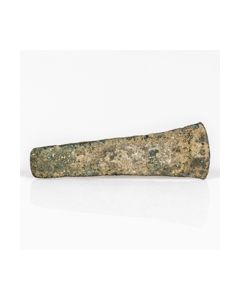 Early flat axe from Judea
Early flat axe from JudeaTrapezoidal axe head from Early Bronze Age. The piece was found in Judea.
Price: on request Two Mesopotamian mosaic cones
Two Mesopotamian mosaic conesThe pieces were part of a mosaic decoration of a Mesopotamian structure in the 4th Millenium BC. The temple architecture from Uruk is a particularly well known example of such a use.
Price: on request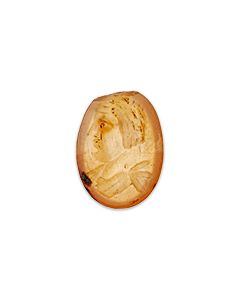 Roman intaglio with bust
Roman intaglio with bustThe gemstone made of yellow-orange carnelian shows a male portrait bust.
Price: on request Hellenistic female head with melon coiffure
Hellenistic female head with melon coiffureAbout 5th century B.C. From an old collection of a Frech engineer.
Price: on request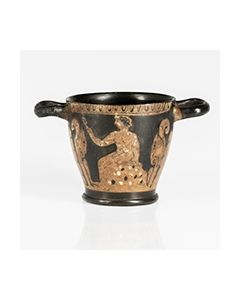 Very large Campanian red figure skyphos
Very large Campanian red figure skyphosDecorated with figures of youths, framed by palmettes. From an old German Frankonian collection. Acquired in the 1920s - 1930s.
Price: on request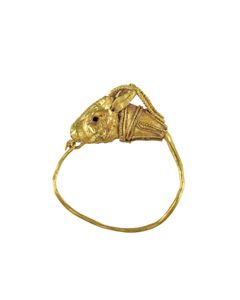 Hellenistic gold earring with antelope head
Hellenistic gold earring with antelope headEar pendant with plastically modeled head of an antelope. The elaborately made head is typical for hellenistic gold jewellery.
Price: on request Very large Egyptian cosmetic palette
Very large Egyptian cosmetic paletteIn the shape of a barbary sheep. From predynastic Egypt. The palette has received considerable scholarly attention and boasts an impressive publication history.
€7,500 Pair of early Byzantine gold earrings
Pair of early Byzantine gold earringsBeautiful jewellery with beads made of emerald and garnet. Made in the eastern part of the Mediterranean during the 6th to early 7th century.
Price: on request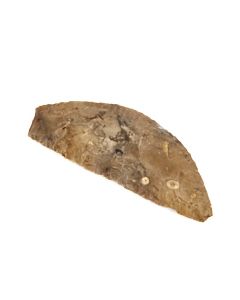 Neolithic sickle from Northern Germany
Neolithic sickle from Northern GermanySmall crescent-shaped blade made of beautiful grey flint. This tool represents an intermediate state within the radical transition from Neolithic to Bronze Age.
Price: on request Neolithic sickle from Northern Germany
Neolithic sickle from Northern GermanyCrescent-shaped blade made of beautiful grey flint. This tool represents an intermediate state within the radical transition from Neolithic to Bronze Age.
Price: on request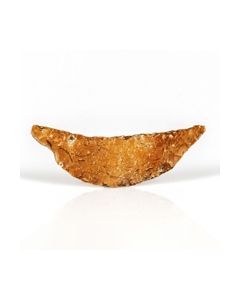 Small Neolithic sickle from Northern Germany
Small Neolithic sickle from Northern GermanyThe crescent-shaped blade is made of reddish brown flint. This tool represents an intermediate state within the radical transition from Neolithic to Bronze Age.
Price: on request Mesopotamian stamp seal in bull shape
Mesopotamian stamp seal in bull shapeThe magnificent seal is from the Jemdet Nasr period. The stamp shows quadrupeds and a scorpion. Published in a book about the Epstein collection.
Price: on request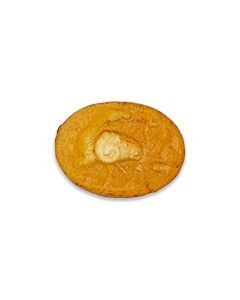 Roman intaglio with gryllos
Roman intaglio with gryllosThe hybrid creature was extremely popular during the Roman Empire. It was believed to convey magical powers.
Price: on request Roman intaglio with the Spartan Othryades
Roman intaglio with the Spartan OthryadesThe glass paste depicts a scene from the battle of the 300. Othryades declares the victory of Sparta. He writes it on the shield of a slain enemy with blood from his own wounds.
Price: on request Roman statue of a sitting man
Roman statue of a sitting manImpressive piece, possibly the funerary statue of a poet or a philosopher. From the collection of Prof. Ritschel, Salzburg, Austria, president of the local museum association, author of over 50 history books, decorated many times for his achievements.
Price: on request Large Apulian Pelike with thermoluminescence analysis
Large Apulian Pelike with thermoluminescence analysisDelicate piece of art, from an old German private collection. Acquired in the early 1980s in a Cologne art gallery.
Price: on request Very large red figure neck amphora with thermoluminescence analysis
Very large red figure neck amphora with thermoluminescence analysisAbsolutely exceptional condition for a vase of this size (46cm), worth the exhibition in a museum. Original painting mainly preserved. From an old German collection, acquired prior to 1983 from the antiquities dealer Helmut Liebert, Krefeld, Germany.
Price: on request Small terracotta ushabti
Small terracotta ushabtiSimple funerary figurine from the 22nd to 25th dynasty of ancient Egypt. Part of a group of three figures that are said to be from the same grave.
Price: on request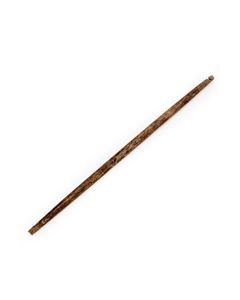 Egyptian spindle shaft made of wood
Egyptian spindle shaft made of woodExceptionally rare main piece of a hand spindle. A find from Thebes in Upper Egypt. From the reign of pharao Senusret II, around 1840 BC.
Price: on request Old Babylonian cylinder seal with gods and inscription
Old Babylonian cylinder seal with gods and inscriptionScene with sun god Shamash and the Amorite god Amurru. The cuneiform writing names the owner of the seal, a faithful servant of these deities.
Price: on request Ushabti of the 22nd dynasty
Ushabti of the 22nd dynastyRemarkable Egyptian funerary statuette made of green faience with black paint. Probably from Tanis and made during the 22nd dynasty.
Price: on request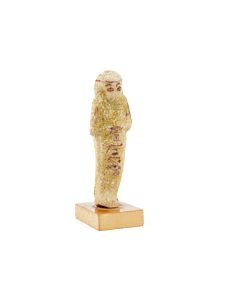 Egyptian ushabti for Nisi-ta-udjat-achet
Egyptian ushabti for Nisi-ta-udjat-achetInteresting figurine made of green faience with black paint. A typical funerary statuette from the Third Intermediate Period of ancient Egypt.
Price: on request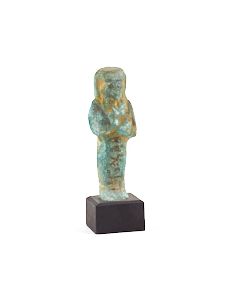 Egyptian ushabti
Egyptian ushabtiFunerary statuette made of turquoise faience with black paint. 21st dynasty of ancient Egypt.
Price: on request Small shabti
Small shabtiNice turquoise faience figurine with black paint. From the 22nd to 25th dynasty of ancient Egypt.
Price: on request Small Egyptian ushabti
Small Egyptian ushabtiFunerary statuette from the Third Intermediate Period of ancient Egypt. Orange-brown clay with green faience.
Price: on request Egyptian ushabti
Egyptian ushabtiInteresting funerary statuette made of mint green faience with black painting. From the Ptolemaic era of Ancient Egypt, incorporating features of earlier periods.
Price: on request Egyptian ushabti for Horus-in-Chemmis
Egyptian ushabti for Horus-in-ChemmisFunerary statuette made of turquoise faience with black paint and cute name inscription.
Price: on request Egyptian ushabti of Hor-wdja from Thebes
Egyptian ushabti of Hor-wdja from Thebes30th dynasty mummiform funerary figurine made of light green faience. With receipt from 1974 by Hassani Abd-El-Galeel of Luxor.
Price: on request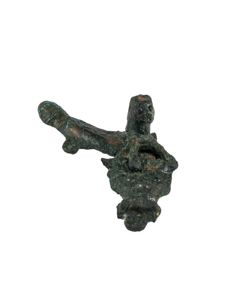 Intricate Roman fascinus amulet from the Rhineland
Intricate Roman fascinus amulet from the RhinelandExceptional are the originally preserved inserted eyes of the lion and bull. Found near the Roman city of Novaesium, today's Neuss in Germany, an early Roman foundation and with this one of the oldest cities in Germany.
Price: on request Roman gaming pieces from the Rhineland
Roman gaming pieces from the Rhineland6 Roman glass gaming pieces and 8 other Roman artefacts. Finds from the Roman city of Novaesium, today's Neuss in Germany.
Price: on request Clay ushabti
Clay ushabtiTall Egyptian funerary statuette from the New Kingdom. From the collection of the archaeologist and artist Erich Charlier.
Price: on request Roman potsherds and mosaic fragment from the Rhineland
Roman potsherds and mosaic fragment from the RhinelandFragments of Roman pottery. Finds from the Roman city of Novaesium, today's Neuss in Germany, an early Roman foundation and with this one of the oldest cities in Germany.
Price: on request

